Haworthia Obtusa Grow & Care Guide
Written by Iris
Oct 09 2021
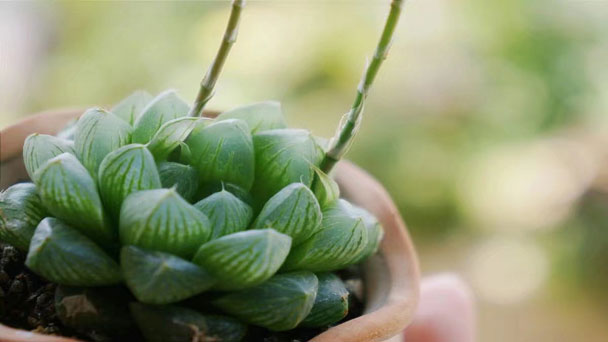
Because of Haworthia Obtusa's small plants and crystal clear leaves, Haworthia Obtusa is one of the most popular succulent varieties in recent years. There are many varieties and hybrids of Haworthia obtusa. If you want to grow healthy and beautiful Haworthia obtusa, you must first understand the growth habits of Haworthia obtusa. Unlike other succulents, Haworthia obtusa can be watered a little more than others.
If you are interested in trying to grow haworthia obtusa from seeds, watch the seed pod, which turns dark as it matures. When this happens, loosely wrap it with clear tape, leaving the top open. This will keep the Haworthia Obtusa seeds healthy but allow you to capture them when the pod breaks open. Plant seeds within six months of harvest. Sow seeds in a well-drained propagation medium. Cover the seeds with a thin layer of pumice or other coarse particles, water, and then cover the container with a clear plastic bag to help maintain humidity. Place in bright light. Seeds should germinate within about a week.
For large size Haworthia, collect leaves from the bottom half of the mother plant to avoid damaging them when you move it off its potting media and onto a propagation tray.
Follow these steps to complete propagation of Haworthia obtusa by leaf-cutting:
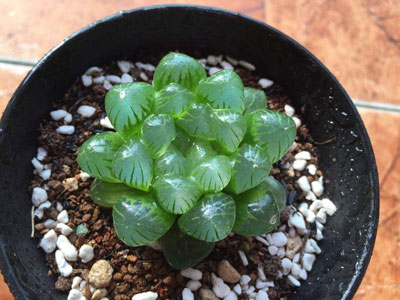
If you want to move your Haworthia Obtusa outside during the summer, expose it to the sunlight a little more each day at the beginning of the season, so that it doesn't become overexposed to the sun on its first day outside. Otherwise, the leaves of Haworthia Obtusa will burn!
This would help prevent the escape of sand and soil from the pot while draining the water. The Haworthia obtusa plant also likes the soil to have all the nutrients in it for its growth. If it lacks any nutrients, the growth of this plant would be affected. You should put some fertilizers and compost in the soil mixture to make it nutrient-rich. Also, make sure that potting soil is neutral, or slightly acidic. In this type of soil mixture, your plant would not only grow but also thrive.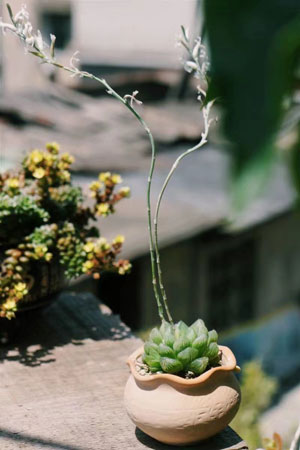
Still, they do best with daytime temperatures around 75-85 degrees Fahrenheit and nighttime temperatures that drop to about 55-60 degrees Fahrenheit.
Haworthia Obtusa is native to South Africa, so the care level is similar as well.
To simulate this environment year-round indoors, you will need an overhead light (not fluorescent) during the day and a 60-watt bulb or higher at night for 12 hours each time.
It would help if you also aimed for relative humidity between 40% – 70%.
The most common disease to afflict Haworthia Obtusa is root rot, which is caused by poor drainage. This may also lead to leaf rot and wilting. Root rot may be treated by removing decayed roots, allowing the Haworthia Obtusa to form a callus at the injury site, and then repotting.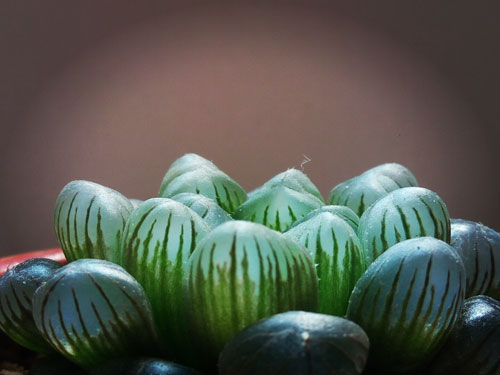
If you know this about yourself or your family members, then it's best if you avoid eating the leaves (and touching them). Just because Haworthia Obtusa succulents don't taste good doesn't mean that they're toxic.
But just in case:
Wash your hands after handling Haworthia Obtusa plants so as not to accidentally touch any part of the houseplant – especially the flowers and seed pods.
Keep children away from large clusters of mature Haworthia Obtusa plants with their seeds on display.
Wear protective gloves when you trim Haworthia Obtusa plants and remove dead leaves.
Don't eat the Haworthia Obtusa, or any part of it, including flowers or seed pods.
If you have a history of kidney stones or are prone to Haworthia Obtusa, avoid touching mature plants with their seeds on display. They may contain oxalates that could lead to health issues for you.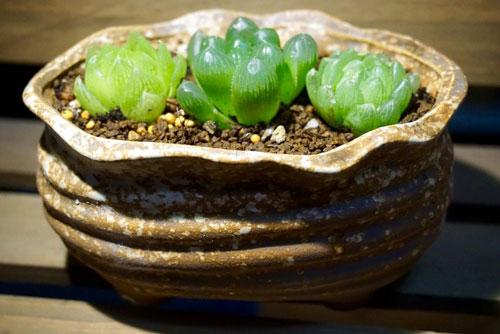
Haworthia Obtusa PropagationHaworthia Obtusa Propagation with SeedsHaworthia Obtusa Propagation with Leaf CuttingsHaworthia Obtusa Propagation with Stem CuttingsHaworthia Obtusa Propagation with OffsetsHaworthia Obtusa CareHaworthia Obtusa LightingHaworthia Obtusa Soil CareHaworthia Obtusa WateringHaworthia Obtusa Temperature & HumidityHaworthia Obtusa Fertilizer CareHaworthia Obtusa PruningHaworthia Obtusa Pests & Diseases CareHaworthia Obtusa FAQWhat's the difference between Haworthia and the Aloe plant?Is Haworthia toxic to people or animals?
Haworthia Obtusa Propagation
Haworthia Obtusa can be propagated by seeds, offsets and cuttings. This succulent type does not require repotting often.Haworthia Obtusa Propagation with Seeds
Haworthia plants produce flowers, generally do so during the summer months. Spent flowers will go to seed, leaving a seed pod behind with tiny black seeds.If you are interested in trying to grow haworthia obtusa from seeds, watch the seed pod, which turns dark as it matures. When this happens, loosely wrap it with clear tape, leaving the top open. This will keep the Haworthia Obtusa seeds healthy but allow you to capture them when the pod breaks open. Plant seeds within six months of harvest. Sow seeds in a well-drained propagation medium. Cover the seeds with a thin layer of pumice or other coarse particles, water, and then cover the container with a clear plastic bag to help maintain humidity. Place in bright light. Seeds should germinate within about a week.
Haworthia Obtusa Propagation with Leaf Cuttings
Haworthia obtusa plants can be propagated by leaf-cuttings for small or medium sizes of the plant.For large size Haworthia, collect leaves from the bottom half of the mother plant to avoid damaging them when you move it off its potting media and onto a propagation tray.
Follow these steps to complete propagation of Haworthia obtusa by leaf-cutting:
- Take a clean and sharp pair of scissors, carefully cut around the edge of the lower leaves on your mother plant. Be sure not to damage any other parts like roots or flowers.
- Place a small amount of moist sphagnum moss in each cell with an empty hole at the bottom (make them as deep as possible).
- Shake off excess water from removed leaves before placing them onto freshly moistened sphagnum moss. Abundant watering will result in rotten young plants, so be careful about how much you give it.
- Press down firmly on top of the new cutting for 15 minutes, then remove your hand to allow the new plant space for air circulation.
- Keep your propagation tray in a well-lit location out of the direct sun with plenty of ambient temperature and humidity.
Haworthia Obtusa Propagation with Stem Cuttings
Stem cutting is also another way to propagate Haworthia obtusa succulent plants.- Cut a healthy branch at least three inches long with one or two nodes with a nice fat node base (the swelling under where leaves usually form). The lower part should include about five pairs of leaves attached tightly along each side of the stem.
- Remove any leaves in contact with the compost or soil as they may rot and cause problems later on down the road if left attached to cuttings.
- Make a shallow diagonal cut at least one inch below where you want your plant to stop growing, following either side of the node based around it.
- Carefully remove each leaf from this part of the cutting while being careful not to damage its roots so that there is no chance for desiccation (drying out).
- Leave about two inches worth of space between nodes before making another cut an inch further up along either side again.
- Repeat every few cuts until you reach three inches above ground level when adding new rooting hormone powder into each newly created section.
Haworthia Obtusa Propagation with Offsets
Haworthia Obtusa propagates from offsets. To be able to propagate from the mother plant, you might wait several years for the main plant to produce an offset. To start this process, use a sharp knife and remove an offset from the main Haworthia Obtusa plant. When you remove the offset, clean the extra soil from it. Before replanting, wait for a few days to allow it to callous. Use well-draining soil for your new succulent plant. Don't forget to water Haworthia Obtusa when the soil dries out.
Haworthia Obtusa Care
Haworthia Obtusa Lighting
Haworthia Obtusa loves the bright, indirect sun. If you have a window facing south, east, or west, that's your winner.If you want to move your Haworthia Obtusa outside during the summer, expose it to the sunlight a little more each day at the beginning of the season, so that it doesn't become overexposed to the sun on its first day outside. Otherwise, the leaves of Haworthia Obtusa will burn!
Haworthia Obtusa Soil Care
The Haworthia obtusa plant likes to grow in soil that is well-draining and porous. Haworthia Obtusa thrives if the soil does not trap any water inside. If it traps water, it would harm the roots of this plant. For that reason, it is very important to have soil that is porous and well-draining and does not trap water inside. To get that type of soil, you should mix sand in the potting soil. Apart from sand, you should also mix some pebbles, such as pumice and perlite as well. Make a layer of perlite, and pumice in the pot, after that, put some sand and soil mixture over the top of this layer.This would help prevent the escape of sand and soil from the pot while draining the water. The Haworthia obtusa plant also likes the soil to have all the nutrients in it for its growth. If it lacks any nutrients, the growth of this plant would be affected. You should put some fertilizers and compost in the soil mixture to make it nutrient-rich. Also, make sure that potting soil is neutral, or slightly acidic. In this type of soil mixture, your plant would not only grow but also thrive.
Haworthia Obtusa Watering
Haworthia Obtusa can be quite beautiful when it is well-taken care of. This succulent type needs typical watering as the other succulents. The watering method is very important to keep your Haworthia Obtusa healthy. It should not sit on the water, and an excess amount of water should be avoided. The best way of watering is the soak and dry method of Haworthia Obtusa. Yet, the Haworthia Obtusa should be controlled to avoid overwatering.
Haworthia Obtusa Temperature & Humidity
Haworthia obtusa can thrive in a wide variety of temperature and humidity levels.Still, they do best with daytime temperatures around 75-85 degrees Fahrenheit and nighttime temperatures that drop to about 55-60 degrees Fahrenheit.
Haworthia Obtusa is native to South Africa, so the care level is similar as well.
To simulate this environment year-round indoors, you will need an overhead light (not fluorescent) during the day and a 60-watt bulb or higher at night for 12 hours each time.
It would help if you also aimed for relative humidity between 40% – 70%.
Haworthia Obtusa Fertilizer Care
The Haworthia obtusa plants need fertilizer to grow. Fertilizers contain the basic nutrients that they need. Once these fertilizers are applied, they dissolve into these nutrients and become available to the plant. You can feed these nutrients to your plant by mixing them with water and feeding this mixture to your plants. You can feed this mixture once a month to your Haworthia obtusa plants.Haworthia Obtusa Pruning
Haworthia Obtusa do not need pruning, and attempting to do so can injure the plant. If a leaf or stem above the soil is injured, let it dry out and form a callus, making sure that the injured Haworthia Obtusa does not come into contact with water. If a root is injured during propagation or repotting, allow it to dry out for at least 24 hours prior to replanting.Haworthia Obtusa Pests & Diseases Care
Haworthia Obtusa are generally resistant to pests, but there are some that can affect your Haworthia Obtusa and lead to root and leaf rot. Resolve mealybugs infestations with an insecticide. Tackle fungus gnat infestations (whose larvae feed on roots) by removing the plant from its growing medium, discarding necrotic plant tissue, and soaking the Haworthia Obtusa in a one percent hydrogen peroxide solution for 15 minutes. Repot Haworthia Obtusa in new soil and discard the old. Haworthia Obtusa is fairly resistant to aloe mites but they can be difficult to eliminate once a plant is infested. Quarantine infected Haworthia Obtusa plants to prevent spread to other plants and remove the infected part. If you're unable to resolve the infestation, you may have to discard the Haworthia Obtusa. Inspect Haworthia Obtusa before discarding it to see if you can propagate any healthy leaves.The most common disease to afflict Haworthia Obtusa is root rot, which is caused by poor drainage. This may also lead to leaf rot and wilting. Root rot may be treated by removing decayed roots, allowing the Haworthia Obtusa to form a callus at the injury site, and then repotting.

Haworthia Obtusa FAQ
What's the difference between Haworthia and the Aloe plant?
Although in the same family, Asphodelaceae, there are several differences between these two succulents. Haworthia Obtusa is generally smaller than most aloe plants. Also, aloe plants have teeth along the leaf margins or edges, Haworthia leaf margins are not toothed.Is Haworthia toxic to people or animals?
Haworthia obtusa is not poisonous. Haworthia Obtusa does, however, contain oxalates that can lead to kidney stones and other health issues for those who are prone to them or have a history of these types of conditions.If you know this about yourself or your family members, then it's best if you avoid eating the leaves (and touching them). Just because Haworthia Obtusa succulents don't taste good doesn't mean that they're toxic.
But just in case:
Wash your hands after handling Haworthia Obtusa plants so as not to accidentally touch any part of the houseplant – especially the flowers and seed pods.
Keep children away from large clusters of mature Haworthia Obtusa plants with their seeds on display.
Wear protective gloves when you trim Haworthia Obtusa plants and remove dead leaves.
Don't eat the Haworthia Obtusa, or any part of it, including flowers or seed pods.
If you have a history of kidney stones or are prone to Haworthia Obtusa, avoid touching mature plants with their seeds on display. They may contain oxalates that could lead to health issues for you.

Latest Updated
- Benefits of Bugleweed - 7 Science-backed Health Benefits
- Bugleweed Dangers & Side Effects - Is It Poisonous?
- How to Plant Evergreen Trees - What You Should Know
- When to Plant Evergreens - Grow Guide for Evergreen Trees
- 12 Wonderful Evergreen Shrubs for Your Garden
- 12 Popular Evergreen Plants with Pictures for Beginners
- When And How To Prune A Lilac Bush Like a Pro
- How to Grow & Care for Lilac Vine (Hardenbergia Violacea)
- Japanese Lilac Tree (Syringa Reticulata) Care & Propagation Guide
- Shumard Oak Pros and Cons - What to Know
Popular Articles
- Winter maintenance of Antirrhinum Majus
- How to Grow Terminalia Mantaly Tree
- How to Grow and Care for Crossostephium Chinense
- How to grow Antirrhinum Majus in spring
- Peristeria Elata (Dove Orchid) Profile: Info & Care Guide
- Underwatered Snake Plant (Sansevieria Trifasciata) - Signs And How To Fix
- How to Care for Brazilian Jasmine Plant (Mandevilla Sanderi)
- How to Grow & Care for Graptopetalum Purple Delight in Summer
- Rosa Chinensis (China Rose): Plant Growing & Care Tips
- How to Care for Baby Sun Rose (Aptenia Cordifolia)